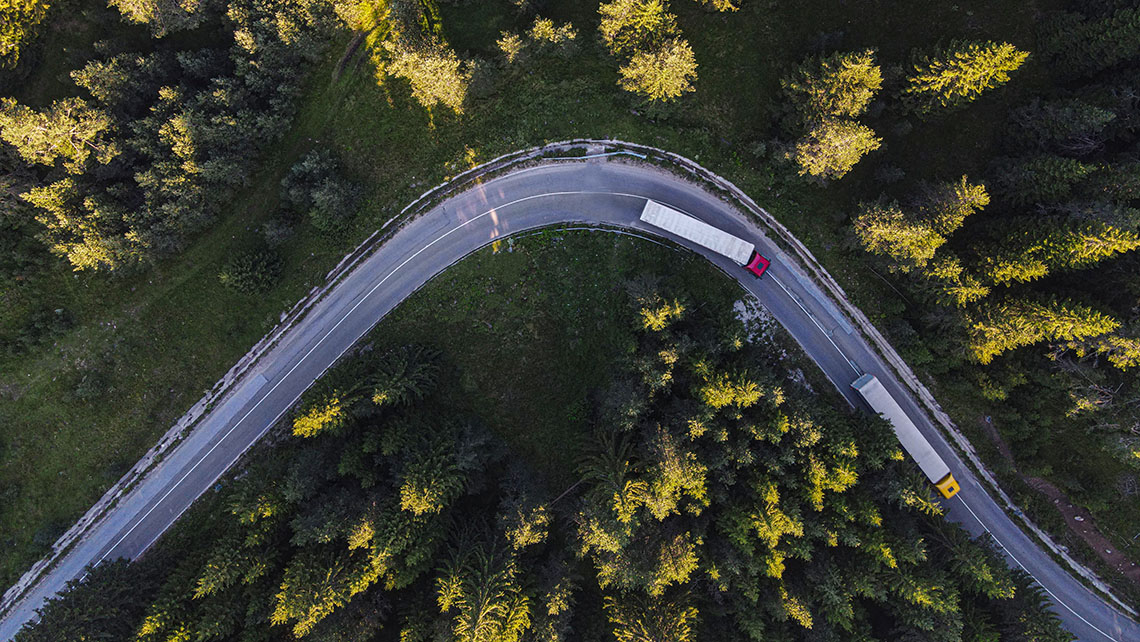There are many ways to reduce the environmental impact of transportation. When it comes to decarbonizing our logistics at Kemira, we are optimizing shipments and modes of transportation, sourcing locally when possible, opting for renewable energy, and encouraging our logistics partners to do the same. Our goal is to meet our ambitious climate targets and help our customers meet theirs.
Setting targets based on facts
Our team has been focused on understanding our total emissions to set ambitious climate targets. Beginning with Scope 1 emissions (from operating our assets) and Scope 2 emissions (from the energy we purchase), we committed to cutting them by 50% by 2030 in 2022, compared to a 2018 baseline, aligning with the 1.5°C goal of the Paris Agreement. In 2023, we began turning our attention to Scope 3 emissions, the indirect emissions created along the value chain by purchasing goods and services from others.
Last year, Kemira began enhanced data collection to source more data and higher quality data from suppliers. Through this analysis, it has become even more apparent that collaboration is the key to decarbonization, especially working closely with our logistics suppliers.
“Our Scope 3 emissions are 82% of our total emissions. Much of that is generated by raw materials but a meaningful portion is related to logistics,” explains Rasmus Pinomaa, Director of Corporate Sustainability.
Our Scope 3 emissions are 82% of our total emissions. Much of that is generated by raw materials but a meaningful portion is related to logistics.
This year in June, our climate targets for Scope 3 emissions will be validated by a third-party, but that doesn’t mean our company has waited to take action. In fact, our supply chain experts around the world are already making significant strides. From helping our preferred fleet operators adopt renewable energy to analyzing the emissions of maritime partners, we are collaborating with transportation providers in every region and thinking strategically about ways to practically reduce emissions now and in the future.
A numbers game
Jori Fabricius, Kemira’s Senior Vice President of Supply Chain Management, says, “In principle, it’s a math question. Emissions are calculated by transported distance with transported weight multiplied by the intensity factor. We built a system about two years ago to begin collecting information for everything we ship internally and externally by weight and geocoded shipping points. Using roughly 3,000 points, we run a thorough quarterly analysis across every single dimension including customers and product lines.”
From those data points, brilliant ideas emerge.
Powering transportation with renewable energy
Where possible, we are opting for greener energy sources to get shipments from A to B. Recently, our team in California completed their first liquid bulk deliveries using electric trucks powered by solar energy, exemplifying our commitment to greener energy sources for shipments. Additionally, in Europe, Kemira has been delivering to municipal water treatment facilities in Sweden with diesel vehicles now running on hydrogenated vegetable oil since the start of 2024, leading to a significant 70% reduction in carbon footprint for those customers.
The transition to renewable energy isn’t limited to road transportation. “We conducted a survey of maritime logistics providers in the last 12 months. All of them are still operating with fossil fuels but some have ambitions to switch to biofuels, which aligns well with our goals,” says Jori. He expects this will make a positive impact in the Middle East, Africa, and Asia.
Reducing transportation or changing modes
Another way to reduce emissions is by reducing the need for transportation. Optimizing logistics networks and making sure trucks are full can go a long way. Kemira’s team in Uruguay reduced emissions by nearly 40% for a paper industry customer by sending more concentrated peroxide. “Higher concentration means fewer shipments,” Jori explains.
An alternative strategy is nearshoring. Sourcing raw or intermediate materials closer to a production site can reduce transportation-related emissions drastically. We are now preventing 400 tons of CO2 emissions on an annual basis by locally sourcing dry polymers for our South Korea JV instead of shipping the polymers from one of our sites in the UK.
Finally, Jori says sometimes changing the mode of transportation to achieve economy of scale is the most effective method for bringing emissions down. For example, container ships or railcars can be more efficient than trucking when moving large volumes. “We reduced our transportation-related emissions for a customer in southern China by 80% by changing from road to maritime,” he said.
We reduced our transportation-related emissions for a customer in southern China by 80% by changing from road to maritime.
Looking at the big picture
At Kemira, our strategy is aligned with building a better future, and climate action is a key focus area. We know our customers and suppliers want to reduce their environmental impact as much as we do. By working together, we can achieve the Paris Agreement, limiting global warming to 1.5°C and help keep our planet in good condition for the future. Learn more about our overall approach to sustainable sourcing.

